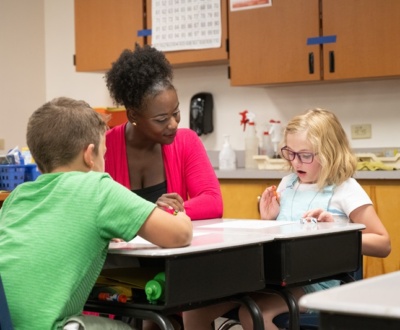The core of the Professional Learning Community (PLC) premise is that education communities must also be learning communities. As leaders and instigators of change, how do we recognize that learning? How do we see professional community growth? What are the characteristics of intelligent professional communities? The indicators range from the familiar, like established norms and quality communication patterns, to environments with accessible, meaningful information, and regular, effective feedback loops.
In this article, I discuss 4 characteristics of intelligent learning communities that underpin strong performance in high-performing schools.
Establish Norms that Challenge Your PLCs
Group norms are important to any group and can promote effective communication and shared responsibility. Foundational group norms are “be present” or “assume positive intent”. Evolved communities move beyond these basic norms to more challenging, risky norms. Norms that challenge your group help foster truly meaningful communication.
My preferred challenging norm is “straightforwardness”. Straightforwardness is essential for improving communication efficiency. It is the idea that we need to embrace honesty and get down to business. Straightforwardness recognizes that we are all learners progressing toward a positive outcome.
A second challenging norm that I suggest is “specificity”. Related to straightforwardness, it also addresses the way we communicate with our peers, pushing us to be accurate and precise alongside our directness. This norm is first and foremost when discussing students. Statements like, “He doesn’t understand anything,” are unhelpful for supporting a productive conversation about how to best support that student. Conversations that start with what a student knows and accurately define knowledge or skill gaps result in more intelligent actions.
Foster Quality Communication Patterns
Norms help create an environment within which quality communication can occur. But what does quality communication look like in an intelligent community? Predictable and consistent communication patterns are essential to quality communication. These can range from regular meetings to newsletters to progress reports, among other mediums. Quantity, however, is not indicative of quality: quality communication is efficient. Participants have relevant information, listen actively, and contribute with questions, observations and insights.
Share Relevant Information
If quality communication is driven by participants equipped with relevant information, what does that information look like? Valuable information supports intelligent, impactful decision making. Data is part of this, as is the idea of professional noticing, but information is only valuable if it is accessible, valid, robust, organized and easily understandable.
Excellent alignment with learning targets creates valid data. Multiple data points related to the same ideas over time create robustness. Data points should come from various perspectives and sources of information (e.g. student work samples, observations, interviews). The more urgent the issues, the more urgent the need for increasingly rich information.
Create Intentional Feedback Loops
Intentional feedback is an essential element of efficient learning. Every interaction in a school contains an element of feedback. Feedback is intentional when there is a plan in place to provide feedback that supports improvements of learning, practice, or social environments.
Feedback runs from colleague to colleague throughout and across the layers of professional communities. It involves self reflection and team reflection. The elements of effective feedback need to be considered as norms are established, meetings are scheduled, and decisions are made about which evidence (data) to collect. As the quality of feedback increases, the effectiveness of each individual and therefore also the entire organization improves. This results in improved academic performance and social/emotional learning outcomes for students.
Intelligent professional communities result from communities that learn together. The result is highly functioning schools with low rates of failure. They are schools that have multi-tiered systems of support built into them. They are schools that are cheerful, that celebrate and have much to celebrate, and they are schools that persevere, beat the odds, and enjoy high levels of success for students, teachers, leaders, and families.
About us and this blog
Our team and tools help schools implement standards-based grading, streamline assessment systems, and use meaningful data to drive decision-making.









